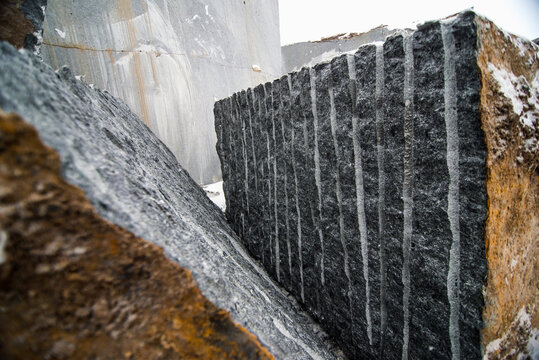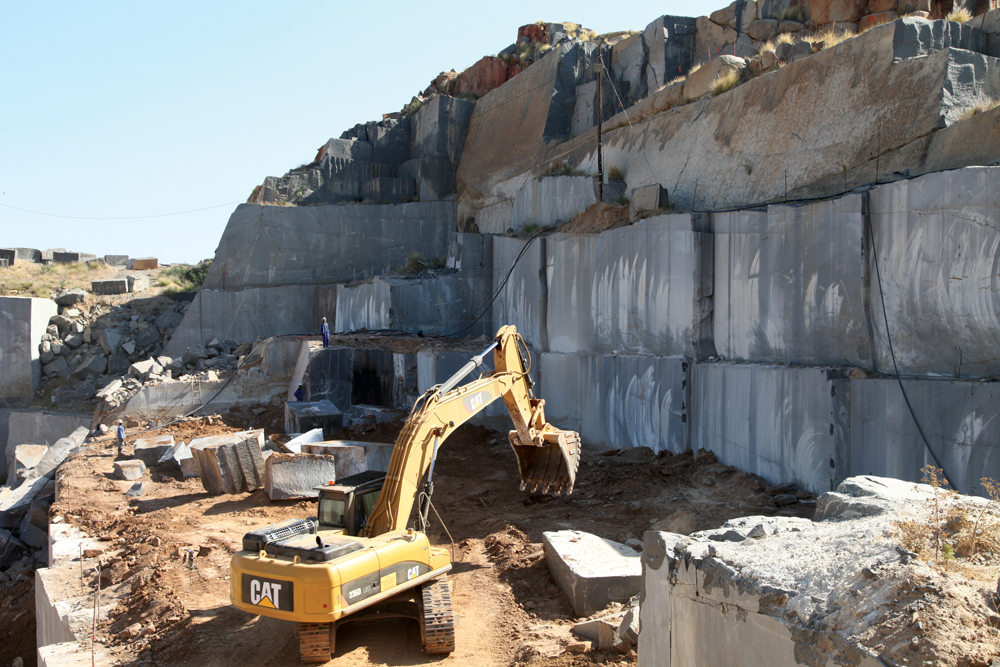The Hidden Gems: Discovering Granite Quarries in South Africa
The Hidden Gems: Discovering Granite Quarries in South Africa
Blog Article
Releasing the Beauty and Sturdiness of Granite Quarry: A Trip Through Time
Granite quarries stand as testaments to both the geological marvels of our planet and the enduring craftsmanship of humanity. As we peel back the layers of time and dig right into the elaborate world of granite quarrying, we discover a tale that not just showcases the beauty and longevity of this marvelous rock yet also loses light on the profound effect it has actually had on people past and existing.

The Beginnings of Granite Quarrying
In the record of history, the beginnings of granite quarrying can be mapped back to ancient civilizations where the quest for resilient building materials sustained the introduction of this timeless craft. From the stunning frameworks of old Egypt to the special temples of Greece, granite has been prized for its strength, beauty, and longevity. The Egyptians, with their sophisticated quarrying techniques, were amongst the very first to remove granite on a large range, utilizing it to construct huge pyramids and detailed statues that have held up against the test of time.
As people progressed, so did the methods of quarrying granite. The Romans further improved the strategies, establishing devices and machinery to essence and transport granite over substantial ranges for their architectural tasks. The longevity and aesthetic appeal of granite made it a treasured material for sanctuaries, monoliths, and sculptures throughout the ages.
Today, the legacy of ancient quarrying methods survives, with contemporary innovation boosting effectiveness while still paying homage to the workmanship of our forefathers. The origins of granite quarrying act as a testimony to human resourcefulness and the long-lasting attraction of this honorable rock.
Tools and Methods of Quarrying
Discovering the careful workmanship of granite quarrying introduces an innovative range of devices and strategies thoroughly honed over centuries. Quarrying granite requires specialized equipment to extract the rock from the earth effectively and with precision. Modern quarries utilize diamond-wire saws, high-powered drills, and nitroglycerins to damage apart the granite in a controlled fashion. These devices permit for the removal of large blocks of granite while decreasing waste and ecological effect.
Along with innovative machinery, standard hand devices are still used in certain quarrying operations to ensure fragile accuracy in removing the stone. Chisels, hammers, and wedges are utilized by proficient quarry workers to separate granite obstructs along all-natural fractures, a technique that has actually been given through generations.
Furthermore, methods such as drilling upright and horizontal openings for putting plumes and wedges, as well as the controlled use of explosives in critical places, make it possible for quarry employees to extract granite successfully while preserving the honesty of the rock. The harmony between modern-day technology and traditional craftsmanship is essential to the sustainable quarrying of granite for generations to come.
Development of Granite Quarries
The makeover of granite quarries in time reveals a fascinating story of technological improvement and industry advancement. From ancient times where hands-on tools like knives and hammers were made use hop over to these guys of to remove granite blocks, to the commercial transformation introducing steam-powered machinery for faster important source quarrying, the development of granite quarries has been marked by considerable technologies. In current decades, the advent of ruby wire saws and advanced drilling technologies has transformed the removal process, permitting for more exact cuts and reduced wastefulness of raw material.

Granite Quarrying in Modern Times
The progression of granite quarrying methods from historic reliance on manual devices to the advanced approaches of contemporary times underscores an amazing trip of technical technology and sustainability techniques within the sector. In modern granite quarrying, progressed equipment such as ruby cord saws, high-capacity excavators, and electronic drilling equipment have actually transformed the removal process. These tools improve effectiveness, accuracy, and safety and security, permitting bigger quantities of granite to be drawn out in a much shorter timeframe contrasted to typical techniques.
In addition, modern-day this quarrying methods prioritize sustainability and environmental stewardship - granite quarries in south africa. Business are progressively taking on environmentally friendly methods like water recycling systems, dust reductions innovations, and recovery prepare for worn down quarries. These campaigns aim to lessen the environmental effect of granite removal, conserve natural deposits, and recover quarried landscapes to their original state
In addition, the combination of electronic innovations like drones, GPS tracking, and 3D modeling has enabled quarry operators to maximize procedures, boost decision-making, and guarantee the lasting monitoring of resources. By accepting innovation and sustainability, the granite quarrying sector in modern-day times remains to prosper while supporting ecological duty.

Maintaining and Safeguarding Granite Quarries
Amidst the advancing landscape of granite quarrying methods, conservation and security of these valuable all-natural websites have actually come to be extremely important concerns for market stakeholders and ecological advocates alike. As granite quarries remain to be a vital source of this desirable rock, it is vital to adopt lasting techniques that ensure their long life and protect surrounding ecological communities.
Preserving granite quarries involves carrying out effective recovery strategies to bring back the land post-extraction. granite quarries in south africa. This procedure consists of improving the terrain, replanting indigenous plant life, and developing environments for wild animals to thrive. By bring back quarries to their natural state, the environmental impact can be decreased, and the charm of these landscapes can endure for future generations to appreciate
In addition, protecting granite quarries needs applying regulations that govern liable quarrying practices. This includes monitoring water top quality, regulating dirt discharges, and managing noise degrees to reduce disruptions to the atmosphere and close-by areas. Collaborative initiatives in between sector gamers, governmental bodies, and conservation teams are important in maintaining these requirements and making sure the lasting use granite quarries.
Verdict
Finally, the journey with time in granite quarrying reveals the beginnings, devices, techniques, and advancement of this method. The modern-day era has brought innovations in quarrying methods, allowing the conservation and security of these important natural resources. It is necessary to remain to promote sustainable methods to make sure the elegance and durability of granite quarries for future generations to appreciate.
Report this page